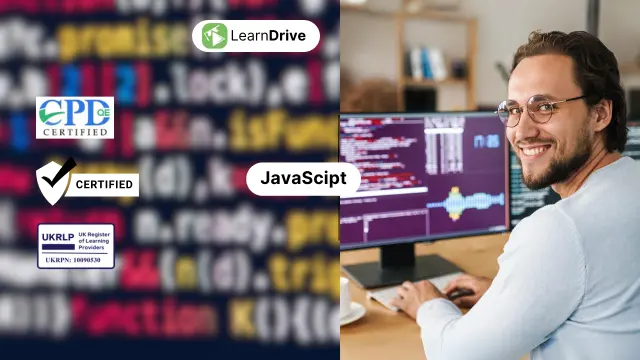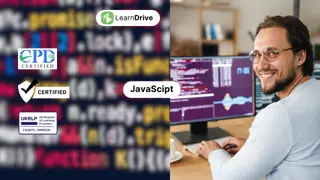
Level 2 Diploma in Javascript with Data Visualization and Object Oriented Programming
Learndrive
03 Premium Course Bundle | 03 Free Certificate | Instant and Lifetime Access | Tutor Support
Add to basket or enquire
Overview
Certificates
Accredited Certificate from LearnDrive
Digital certificate - Included
Reed Courses Certificate of Completion
Digital certificate - Included
Will be downloadable when all lectures have been completed.
Curriculum
Course media
Description
This Javascript Bundle Comes up with the following courses:
➥ Course 01: Javascript with Data Visualisation
This course dives into JavaScript programming for data visualization, teaching you how to use JavaScript libraries like D3.js and Chart.js. You'll learn to create dynamic, interactive visualizations that bring data to life, enhancing user experience and functionality in web applications.
➥ Course 02: Java Programming Level 2
Build upon your basic Java skills with more complex programming constructs and deeper insights into Java development. This module covers arrays, loops, data structures, and essential algorithms, preparing you for more advanced Java programming challenges.
➥ Course 03: Advanced Java with Object-Oriented Programming
Focus on advanced Java programming, particularly in using object-oriented principles effectively. You'll explore inheritance, polymorphism, abstraction, and encapsulation, gaining the skills to design and implement scalable Java applications efficiently.
Career path
- Web Developer - £20,000 to £50,000/year
- Front-End Developer - £25,000 to £65,000/year
- Back-End Developer - £30,000 to £70,000/year
- Python Developer - £30,000 to £65,000/year
Questions and answers
Currently there are no Q&As for this course. Be the first to ask a question.
Reviews
Currently there are no reviews for this course. Be the first to leave a review.
Sidebar navigation
Legal information
This course is advertised on Reed.co.uk by the Course Provider, whose terms and conditions apply. Purchases are made directly from the Course Provider, and as such, content and materials are supplied by the Course Provider directly. Reed is acting as agent and not reseller in relation to this course. Reed's only responsibility is to facilitate your payment for the course. It is your responsibility to review and agree to the Course Provider's terms and conditions and satisfy yourself as to the suitability of the course you intend to purchase. Reed will not have any responsibility for the content of the course and/or associated materials.


